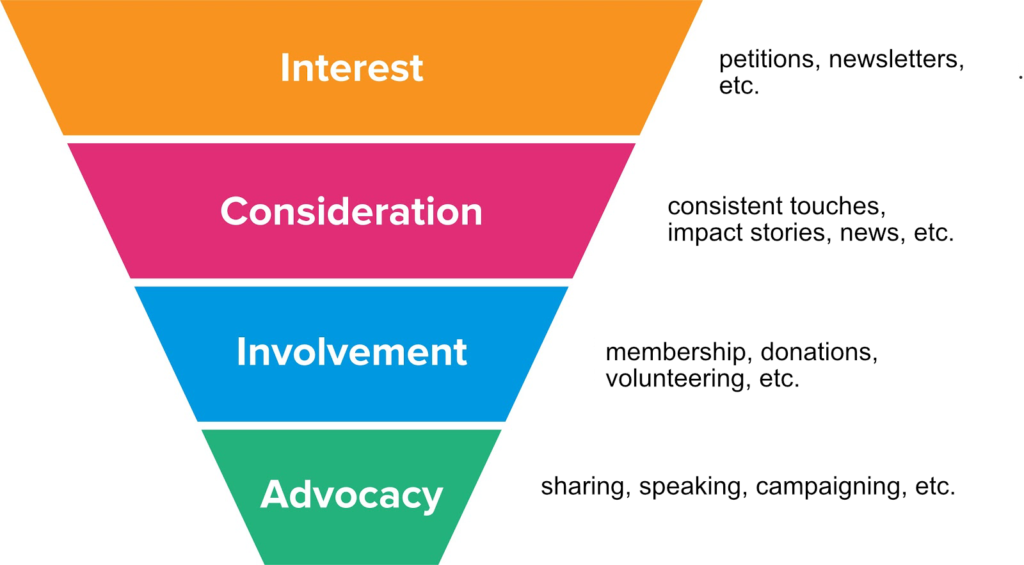The Anatomy of an Association Website
Your website is the frontline.
If you’re spending all day every day shaking hands and giving the elevator pitch about your association, we applaud you. But for the rest of us, our websites are doing the work. They’re our membership director, our communications manager, and our giving person, available 24/7 to spread the good word about our organizations. They’re either attracting or deflecting interest, membership, and donations. Websites are powerful but they often lack the humanity that best sells an association.
So, how can you bring more head and heart to your website?
Getting Ahead with Strategy
Strategy is nothing more than the making of an integrated set of choices. And the first choice to make regarding your website is what you want it to accomplish. What do you want your site to do? Whatever it is—it should be obvious to the user.
Get early buy-in from stakeholders, and document the goals you’re setting and how you’ll measure them. If you can measure your goals in a tangible way, you’ll stay grounded in your strategy.
You may have more than one goal for your website. That’s a good thing. Your website is a collection of goals, both overall and for each individual webpage. Knowing the purpose, desired user behavior, and audience of your website will give you the best idea of how it should be built. For example, if you have a “Join” page on your association’s website, then the purpose of that page is to make a case for membership, with the intent that your prospects sign up to become members. If your page is about advocacy, you want to showcase your advocacy work so both your members and prospects can learn more about where you stand on important issues they care about.
Keep the User in Mind
You may be familiar with the marketing funnel.

From a new user’s point of view, their journey through your marketing funnel should be seamless—so much so that it’s not even noticeable. To users that might want to show interest in your organization and make themselves known to you, a newsletter is a great foot in the door. After a period of consistent touches, the user might enter the Consideration phase after they get a feel for the work your organization is doing. This means they’re considering how to more deeply engage with you. Then, they may be more inclined to get involved in terms of membership, donations, or volunteering. That’s the ideal, but it’s not the end—you have to make them advocates of your organization too.
It’s also important to note that part of your strategy involves making sure your users have ease of access—or cognitive ease—when navigating your website. Make the next step in your user’s journey clear and remove superfluous content. The success of your goals depends on it.
Let the Heart Lead
Emotion triggers action. You must make people care before you can expect them to engage with you.
What you’re providing here is intangible—it’s a feeling. Your website is consistently answering one question: why should anyone care? Like Simon Sinek says in his TED Talk, lead with your “why.”
If your website is the vehicle, your mission is in the driver’s seat. A mission-centric message must be woven into the DNA of your website. Tell the stories your users want to hear, and put that mission-centric content first, at the top of your homepage. The decision that anyone makes to engage with an association is an emotional one—reason takes a back seat.
Create Compelling Content
What questions do your visitors have?
Above all, they want to know who your association serves. Share that information at a glance with both content and imagery.
They probably also want to know your impact, right? Talk about the ways you improve the lives of your members. Craft your “hero message,” a short and simple statement that captures the essence of what your organization does.
Visitors want to know how they can participate with you. Referencing that marketing funnel, maybe a win for you is simply having that user first engage through a sign-up for your newsletter or by signing a petition.
Take a look at your website. Does it have these content essentials?
- Hero message
- Obvious calls-to-action
- Clear contact information
- Impact information
- Social proof (testimonials, 3rd party endorsements, etc.)
If not, start there.
See if your current site measures up with Mighty Citizen’s Website Evaluation Kit.
Bring It To Life
We’ve talked about the head and the heart of your website and the work is in bringing it to life! A great website that clearly outlines who you are and what you’re about is invaluable, so investing the time to give it a bit more humanity will always be worth it.


